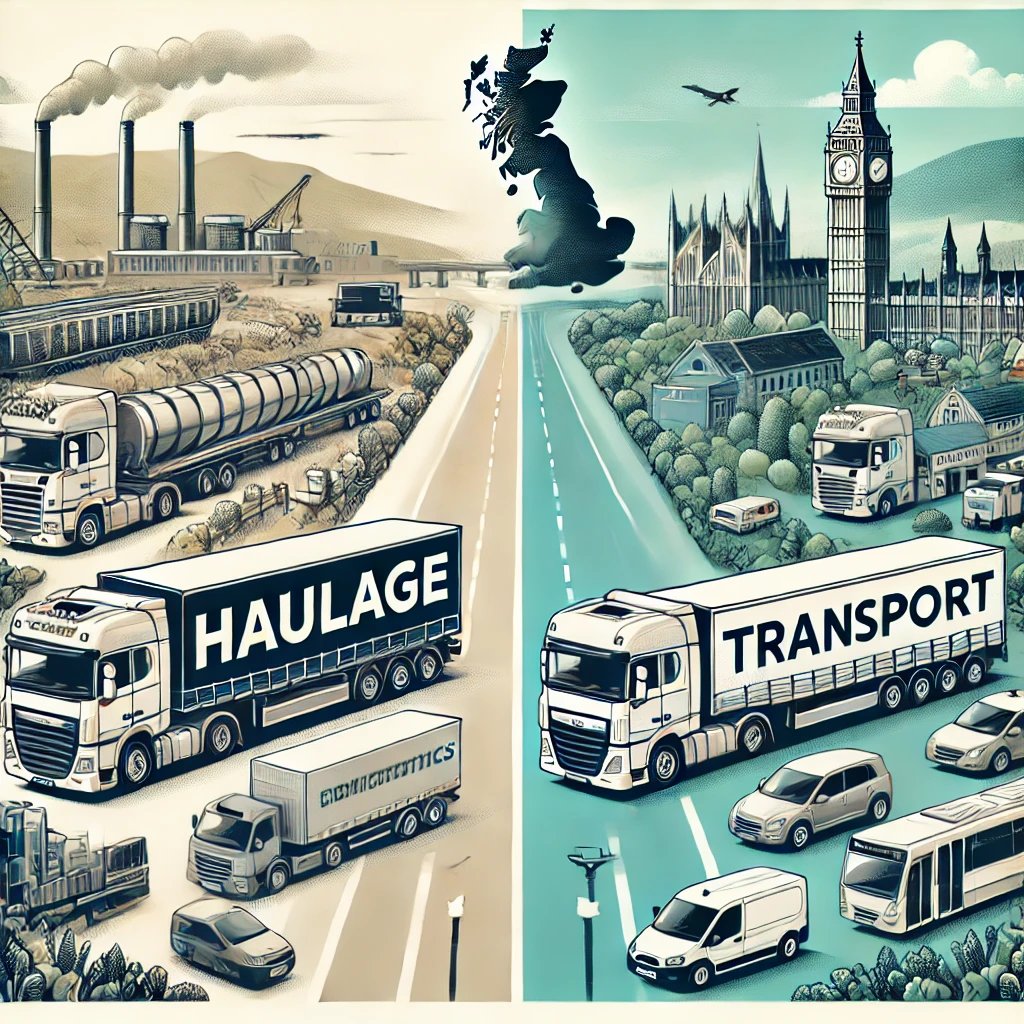Understanding the Key Differences: Haulage vs Transport in the UK
A comprehensive guide explaining the distinct characteristics of haulage and transport services in the British logistics industry.
In the United Kingdom's logistics sector, the terms 'haulage' and 'transport' are often used interchangeably, yet they have distinct characteristics and applications. Let's delve into these differences and understand what sets them apart.

Haulage: Specialised Heavy Goods Movement
Haulage specifically refers to the commercial transportation of goods and materials via road using heavy goods vehicles (HGVs). This sector is heavily regulated in the UK, requiring specific licenses and certifications including:
- Operator's License (O-License)
- Driver Certificate of Professional Competence (CPC)
- International Operator's License for cross-border deliveries
The haulage industry primarily focuses on moving large quantities of goods between fixed points, often involving:
- Container transportation from ports
- Industrial equipment movement
- Bulk material delivery
- Construction site logistics
Transport: The Broader Spectrum
Transport encompasses a wider range of movement solutions, including:
- Passenger services
- Light goods vehicles
- Public transportation
- Multi-modal solutions (combining air, sea, and land)
- Last-mile delivery services
This broader term covers everything from taxi services to international shipping, making it more versatile but less specific than haulage.
Key Operational Differences
Scale and Equipment
Haulage operations typically involve:
- Vehicles exceeding 3.5 tonnes
- Specialised loading equipment
- Dedicated storage facilities
- Heavy-duty infrastructure
Transport services can include:
- Various vehicle sizes
- Multiple transport modes
- Flexible routing options
- Diverse cargo types
Regulatory Framework
The haulage sector faces stricter regulations due to the nature of heavy goods movement:
- Mandatory tachograph usage
- Specific route restrictions
- Weight limitation compliance
- Regular vehicle testing requirements
Business Models
Haulage companies usually operate on:
- Long-term contracts
- Fixed routes
- Regular schedules
- Bulk movement pricing
Transport businesses might offer:
- Ad-hoc services
- Variable routing
- Mixed cargo options
- Flexible pricing structures
Industry Impact and Future Trends
The distinction between haulage and transport continues to evolve with:
- Integration of digital technologies
- Sustainable operation demands
- Changes in consumer behaviour
- Brexit-related adaptations
Making the Right Choice for Your Business
Understanding these differences is crucial for:
- Selecting appropriate services
- Meeting regulatory requirements
- Managing costs effectively
- Planning logistics strategies
Conclusion
While haulage represents a specialised subset of transport focused on heavy goods movement by road, transport encompasses a broader range of movement solutions. This distinction is particularly relevant in the UK market, where regulatory frameworks and operational requirements differ significantly between the two sectors.
For businesses operating in the UK, understanding these differences ensures compliance with relevant regulations and helps in choosing the most appropriate service for specific logistics needs.








